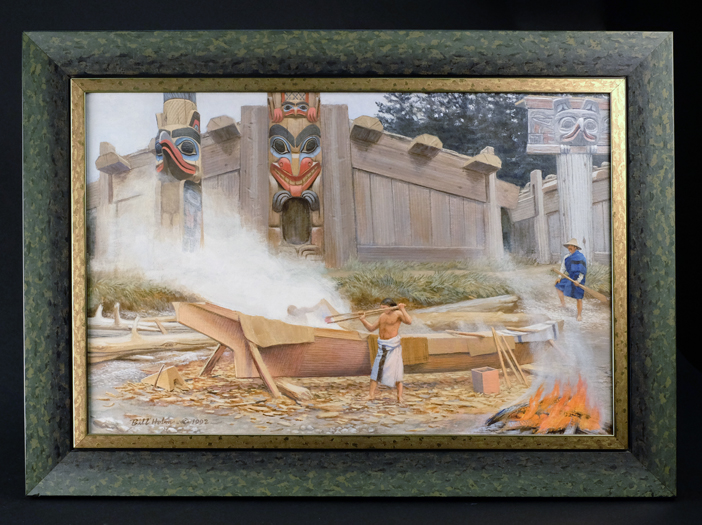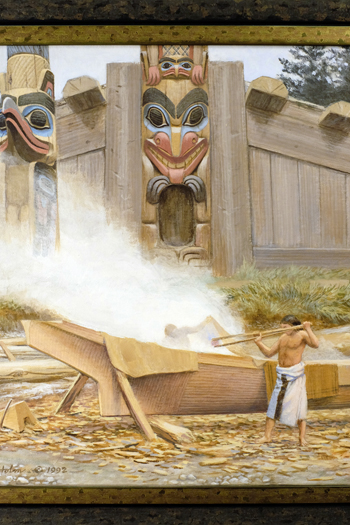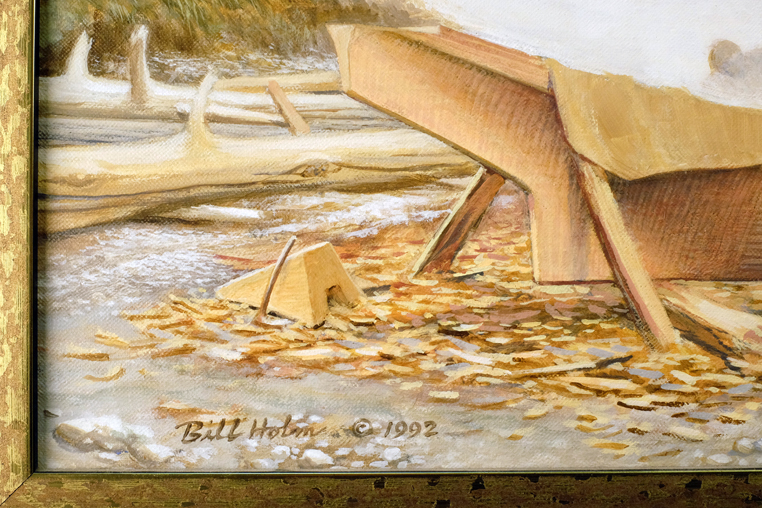Spreading the Canoe – 1992
EXHIBITION:
Dealers’ Choice: A Staff Picks ExhibitionMasterfully designed canoes of many sizes and forms were made on the Northwest Coast by carving from solid logs. Usually these were of western red cedar, but in some areas Sitka spruce or cottonwood was used. Typically these boats were widened beyond the original diameter of the log by the spreading of the steam-softened sides. Spreading does more than widen the canoe; it introduces major changes of form throughout the hull which the canoe maker must anticipate in carving the log. The straight and level gunwales bend smoothly out and down, while the ends rise, forming a graceful sheer and transforming a rigidly narrow, hollow trough into an elegant watercraft.
In order to spread without splitting, the walls of the hull are made remarkably thin (just over one inch in the 63-foot Northern canoe in the American Museum of Natural History, for example). When the hull is completely carved, water is poured into it (to a depth of 6 inches or so) and is heated to boiling with red-hot rocks. The resulting steam is confined by covering the open hull with mats. The hot rocks are replaced as needed to keep the water at a boil. The softened sides, heated through by the steam inside and fires outside, begin to move outward, aided by the weight of water and rocks pressing down in the center. Spreading sticks are tapped into place between the gunwales and are moved toward the ends and increased in length in the center as the sides flare outward. When the planned beam and form are reached, the canoe is allowed to cool, the water is removed, and the thwarts, bow and stern blocks, and gunwale caps are fitted and fastened in place. Large traveling and war canoes were often painted with designs associated with the names of the canoes or the crests of the owners.
Here, a medium-size Haida canoe is just reaching its finished width; one last load of hot rocks helps to soften the hull thoroughly. As the covering mat is lifted, steam rolls up, partly obscuring the big plank houses with their massive frontal poles on the bank about the beach. Haida canoe makers were widely respected and their products were in demand throughout the northern Northwest Coast. Perhaps this canoe is destined to be taken across Hecate Strait to be traded at the Nass River for eulachon grease, mountain sheep horns, or other mainland products not available on Haida Gwaii.
Sun Dogs and Eagle Down: The Indian Paintings of Bill Holm by Steven C. Brown, with a chronology and bibliography by Lloyd J. Averill and with captions by Bill Holm; p.128



